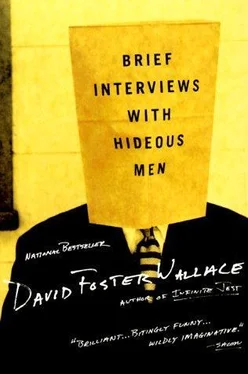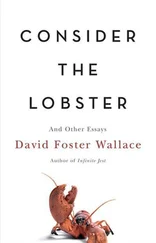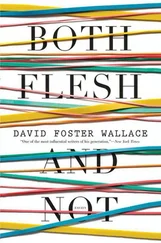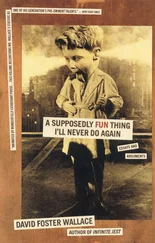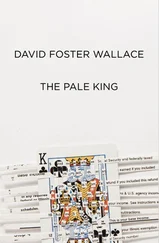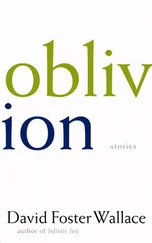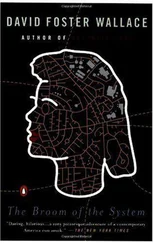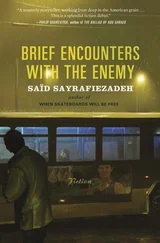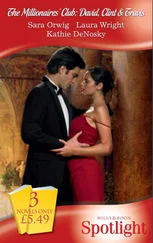The steeple reappears as Ndiawar leans back. “Yang is a caseworker who consumes medication. However he is cheap, and has in that chest of his a good heart…”
Yang stares at the Director. “What medication?”
“… which goes out toward others.”
Day stands. “I need to know when I start.”
Ndiawar extends both hands. “Buy clay.”
Sarah walks Day to the pool on the night before Esther gets hurt. She asks Day to touch water that’s lit from below by lamps in the tile. He can see the center drain and what it does to the water around it. The water is so blue it even feels blue, he says.
She asks him to immerse himself in the shallow end.
Day and Sarah have sex in the shallow end of Sarah’s childhood home’s blue pool. Sarah around him is warm water in cold water. Day has his orgasm inside her. The drain outlet slaps and gurgles. Sarah begins to have her orgasm, her lids flutter, Day tries with wet fingers to hold her lids open, she hanging on to him, back ramming against the tiled side with a rhythmic lisping sound, whispering, “Oh.”
FOUR COLORS
“I don’t know who Soutine is,” Yang says as they drive away from the home of the lady who speaks only Spanish. “You thought it looked like Soutine?”
The car’s color is a noncolor, neither brown nor green. Day’s seen nothing like it. He wipes sweat from his face. “It did.” His supply case is in the back under a steel bucket. A mophandle rattles against the bucket. Sarah paid for the case and supplies.
Yang hits the dashboard’s top. The air conditioner grinds out a smell of must. The car’s heat is intense.
“Do the phone bill,” Day says, falling in behind a city bus hairy with spraypaint. The bus’s fumes are sweet.
Yang rolls down his window and lights a cigarette. The sunlight makes his exhalation pale.
“Ndiawar told me about your wife’s little girl. I’m sorry about that crack about a vacation your first week here. I’m sorry I didn’t know.”
Day can see Yang’s profile out of the corner. “I’ve always liked the blue of a phone bill.”
The air conditioner begins to work against its own smell.
Yang has very black hair and a thin wool tie and eyes the color of trout. He closes them. “Now I’ve got the phone bill folded into a triangle. But one side doesn’t quite come down and meet the base. But it’s still a triangle. An order-in-chaos type of thing.”
Day sees something yellow by the road.
“Eric?”
“The bill’s got a tiny rip in the right leg of the triangle,” Yang says, “and it’s for sixty dollars. The rip is tiny and white and sort of hairy. That must be the paper’s fibers or something.”
Day guns to pass a pickup full of chickens. A spray of corn and feathers.
“I’m rotating the rip out of sight,” Yang whispers. The side of his face breaks into crescents. “Now there’s nothing but phone-bill blue.”
There’s a horn and the tug of a swerve.
Yang opens his eyes. “Whoa.”
“Sorry.”
They drive past some dark buildings with no glass in the windows. A dirty boy throws a tennis ball at a wall.
“I hope they,” Yang is saying.
“What?”
“Catch the drunk driver.”
Day looks over at Yang.
Yang looks at him. “The one who hit your little girl.”
“What driver?”
“I just hope they catch the bastard.”
Day looks at the windshield. “Esther had an accident in the pool.”
“You guys have a pool?”
“My wife does. There was an accident. Esther got hurt.”
“Ndiawar told me she got hit.”
“The drain outlet got blocked. The drain’s suction sucked her under.”
“Jesus Christ.”
“She was under a long time.”
“Am I sorry.”
“I can’t swim.”
“Jesus.”
“I could see her very clearly. The pool’s very clear.”
“Ndiawar said you said the driver was drunk.”
“She’s still in the hospital. There’s going to be brain damage.”
Yang is looking at him. “Should you even be here today?”
Day cranes to see street signs. They’re stopped at a light. “Which way.”
Yang looks at the log book attached to the visor. Its rubber band was once green. Points.
VERY HIGH
The brushstrokes of the best-dreamt work, too, are visible as rhythms. This day’s painting discloses its rhythms against a terrain in which light is susceptible to the influences of the wind. This is a wind that blows hard and inconstant across the school’s campus, whistles against the De Chirico belltower from which it has scoured all shadow. This is a terrain in which there are alternating lulls and gusts of light. In which open spaces flash like diseased nerves and bent trees hang with a viscous aura that settles to set the grass on willemite fire, in which windrows of light pile up against fencebottoms, walls, and undulate and glow. The belltower’s sharp edges shiver gusts into spectra. Tall boys in blazers move knifelike through a parting shine with sketchbooks held eye-level; their shadows flee before them. The scintillant winds lull and gather, seem to coil, then brawl and whistle and strobe and strike to break faint pink through the Hall of Art’s rose window. Day’s sketched notes light up. On the machinelit screens at the front, two slides of the same thing project the frail and palmate shadow of the art professor at the podium, a dry old Jesuit hissing his s’s into the illwired mike, reading a lecture to a hall half full of boys. His shadow is insectile against Vermeer’s colored Delft as he feels at his eyes.
The withered priest reads his lecture about Vermeer and limpidity and luminosity and about light as attachment/vestment to objects’ contour. Died 1675. Obscure in his time you see for painted very few. But now we know do we not, ahm. Blue-yellow hues predominate as against ahm shall we say de Hooch. The students wear blue blazers. Unparalleled representation light serves subtly to glorify God. Ahm, though some might say blaspheme. You see. Do you not see it. A notoriously dull lecturer. An immortality conferred upon implicit in the viewer. Do you ahm see it. ‘The beautiful terrible stillness of Delft’ in the seminal phrase of. The hall is dark behind Day’s glowing row. The boys are permitted some personal expression in choice of necktie. The irreal evenness of focus which transforms the painting into what glass in glass’s fondest dreams might wish to be. ‘Windows onto interiors in which all conflicts have been resolved’ in the much-referenced words of. All lit and rendered razor-clear you see and ahm. It meets TuTh after lunch and mail call. Resolving conflict, both organic and divine. Flesh and spirit. Day hears an envelope ripped open. The viewer sees as God sees, in other ahm. Lit up throughout time you see. Past time. Someone snaps gum. Whispered laughter somewhere up in a rear row. The hall is dimly lit. A boy off to Day’s left groans and thrashes in a deep sleep. The teacher is, it is true, wholly dry, out of it, unalive. The boy next to Day is taking a deep interest in that part of his wrist which surrounds his watch.
The art professor is a sixty-year-old virgin in black and white who reads in a monotone about how one Dutchman’s particular brushstrokes kill death and time in Delft. Well-barbered heads turn obliquely to see the angle of the clock’s flashing hands. The notorious eternity of the Jesuit’s lectures. The clock is against the back wall, between windows with theater shades that bump the glass with each gust.
Thin blotchy Day can see how it’s the angle of the bright breeze against the screen that makes the wet face atop the priest’s lit shadow glow. Big jelly tears shine above the old man’s typed lecture. Day watches a teardrop move into another teardrop on the art teacher’s cheek. The professor reads on about the use of four-colored hue in the river’s sun’s reflection in Delft, Holland. The two drops merge, pick up speed along the jaw, head for the text.
Читать дальше
